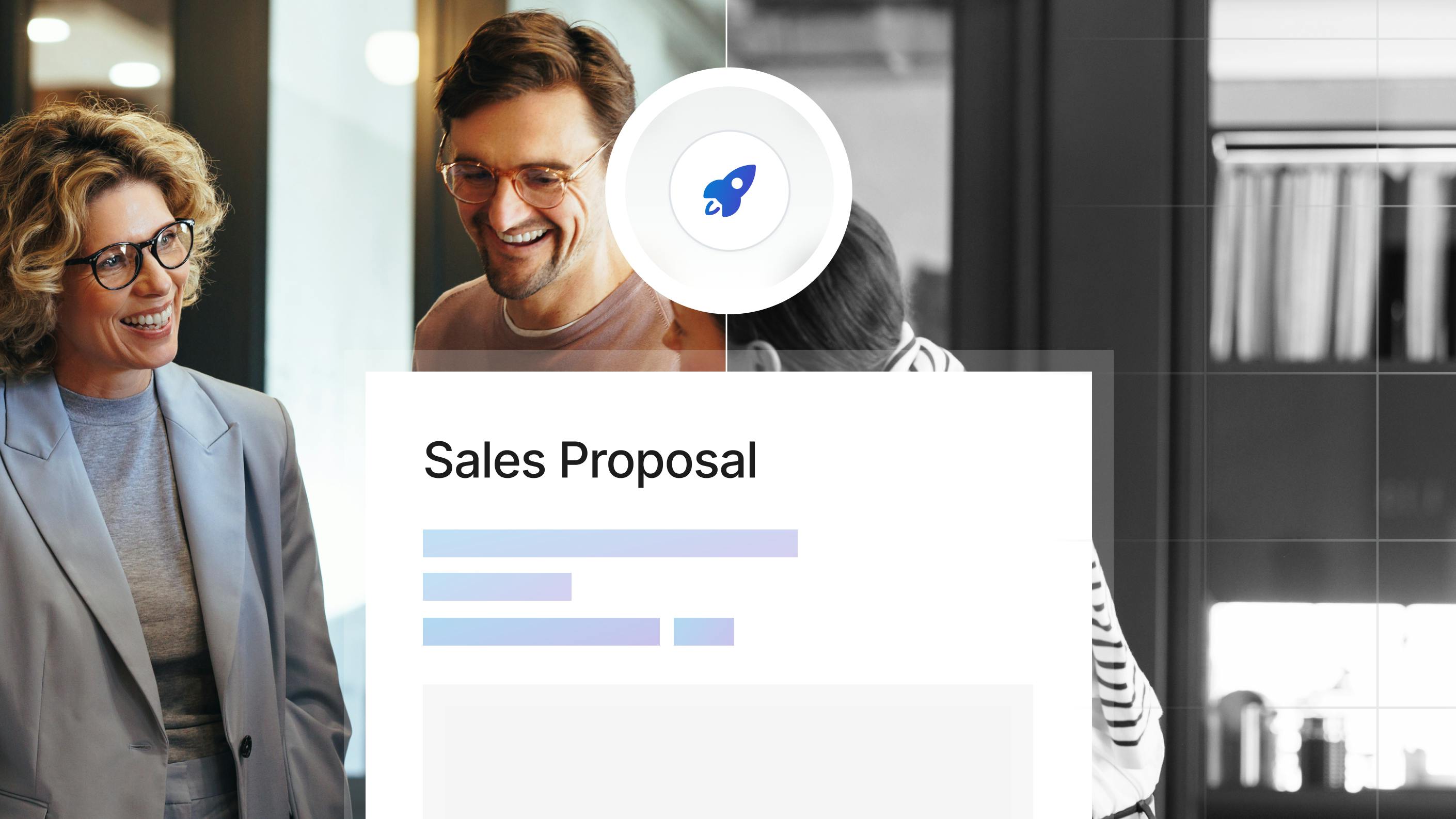Sales teams today face increasing pressure to respond quickly to opportunities while maintaining high-quality, persuasive proposals. Automating sales proposals doesn't just speed up the process; it also enhances strategic decision-making. By leveraging powerful and strategic uses of automation, businesses can generate more proposals at scale while ensuring consistency, accuracy, and professionalism.
That all sounds nice, and can certainly already make for a compelling argument for automated sales proposals, but the question executives and decision-makers want answered remains: Do automated proposals lead to more sales? Yes, absolutely.
But does automating proposals mean sacrificing quality? No, not at all. The most effective proposal automation solutions, like Responsive's Proposal Builder, help teams create proposals tailored to each opportunity without starting from scratch every time.
Let’s explore how automated sales proposals can lead to a more effective sales process overall, while also leading to an increase in sales.
What makes a proposal effective in the first place?
An effective sales proposal is more than just a document. It’s a persuasive pitch that demonstrates an understanding of the prospect’s needs and offers a compelling solution.

Each sales proposal should clearly demonstrate:
- You understand the client’s situation – A strong proposal shows that you grasp the client's challenges and requirements.
- Specific solutions tailored to the RFP’s requirements – Proposals should map out clear, measurable business outcomes.
- Demonstrable ROI – Prospects need to see the value your solution brings, ideally in terms as clear and concise as possible to make your solution digestible in a quick read.
- Relevant experience and differentiation – Highlight past successes and what makes your company stand out amid the oceans of possible alternatives.
- A professional, visually compelling layout – Easy-to-read formatting, consistent branding, and impactful visuals reinforce your message.
For more guidance on crafting winning proposals, check out 7 Tips to Make Your Sales Proposal Unforgettable.
Can automated proposals reach that level of quality?
Yes! In fact, automation helps maintain and even enhance proposal quality.
- Leverage internal knowledge – Automated tools pull from a central content library that is unique to your business to maintain accuracy and consistency.
- Tailor content to each opportunity – Customizable templates and stored case studies help to create a more personalized, persuasive touch.
- Maintain branding and design quality – Every automated proposal aligns with brand guidelines by relying on your stored, proven-to-win templates.
- Improve strategic decision-making – Tools like AI-driven RFP analysis help sales teams prioritize high-value opportunities.
With Responsive AI, teams can automatically analyze RFPs, identify key requirements, and draft responses that align with prospect needs. This collection of automation tools will help your team pursue only the most promising opportunities, helping set the foundation for higher win rates.
Automated proposals still require human oversight
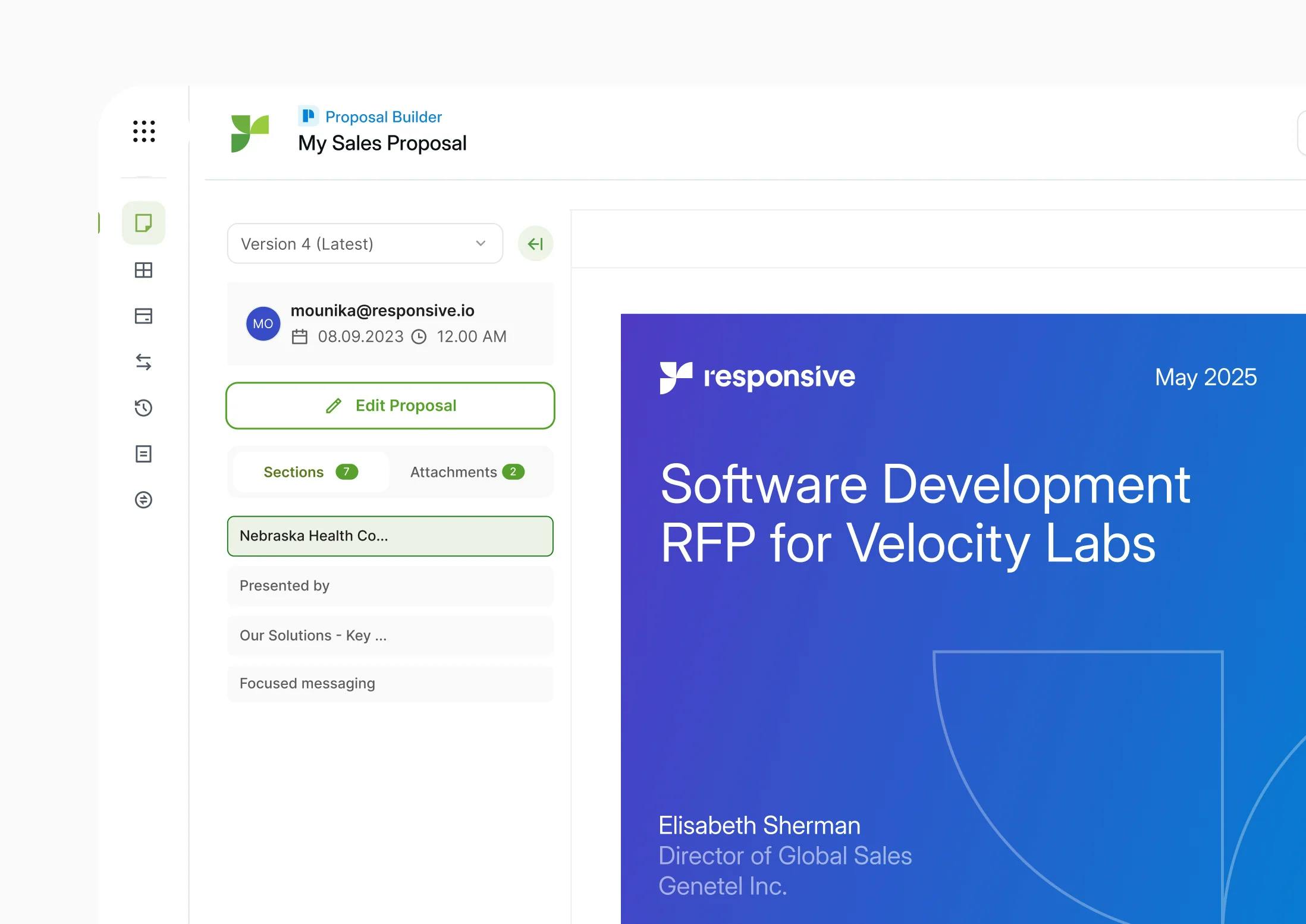
While automation streamlines proposal creation, human expertise remains essential. The best sales proposals combine efficiency with strategic input from skilled professionals. Proposal managers and sales leaders will continue to play key roles in:
- Project management – Overseeing proposal timelines and deadlines.
- Content refinement – Ensuring responses are compelling and well-structured.
- Final editorial approval – Reviewing proposals for tone, accuracy, and alignment with business objectives.
- Proposal tracking and follow-up – Engaging prospects after submission to maximize success rates.
Automation handles tedious and repetitive, time-consuming tasks, freeing up sales and proposal teams to focus on high-value activities that will increase win rates. Read more about this in Proposal automation guide: benefits, uses, tips & software.
Automation enables more strategic proposal creation
Sales teams don’t just need better proposals. They need a better way to create them efficiently. Automation creates a more efficient proposal pipeline by optimizing key areas like:
- Faster response times – Reducing turnaround times on proposals improves the chances of closing deals.
- Larger scale proposal production – Automation makes it possible to handle more opportunities simultaneously, most notably by scanning through entire documents and helping generate first drafts in seconds thanks to tools like Proposal Builder.
- More strategic RFP selection – AI tools help teams focus on the highest-value bids and focus their time on the opportunities they are most likely to win.
- Better resource allocation – Employees spend less time on repetitive tasks and more time on strategy that will directly lead to more wins.
Proposal automation streamlines the process to make all of those optimizations possible, positioning your organization for higher win rates, greater revenue, and a competitive edge in the market.
Case Study: Accelerating response time 10X with proposal automation and AI
Netsmart, a healthcare IT company, faced slow response times that hurt their win rates. To combat this challenge, Netsmart turned to AI-driven proposal automation. By implementing Responsive’s AI-powered tools, they:
- Reduced response time by 10X
- Increased proposal submissions by 67%
- Saw higher engagement from subject matter experts
This transformation not only improved efficiency but also directly impacted their revenue growth.
Our go-forward rate for RFPs is sitting at 93%, where last year we were at 65%. That’s huge. It’s impacting the bottom line at the company because we don’t have the stumbling blocks anymore and are advancing to the next phase of an RFP.
Andrew Mersman
Senior Director of Solution Consulting at Netsmart
How automation tools lead to high-quality proposals
Proposal generation is a dynamic process that requires strategic decisions long before the time comes to actually write the proposal. Modern proposal automation platforms include key features to drive high standards in each proposal:
Templates
Building a content library of templates helps every proposal align with industry best practices while remaining customizable for each opportunity. As a result, you’ll save time during the creation process, and your proposals will look more professional.
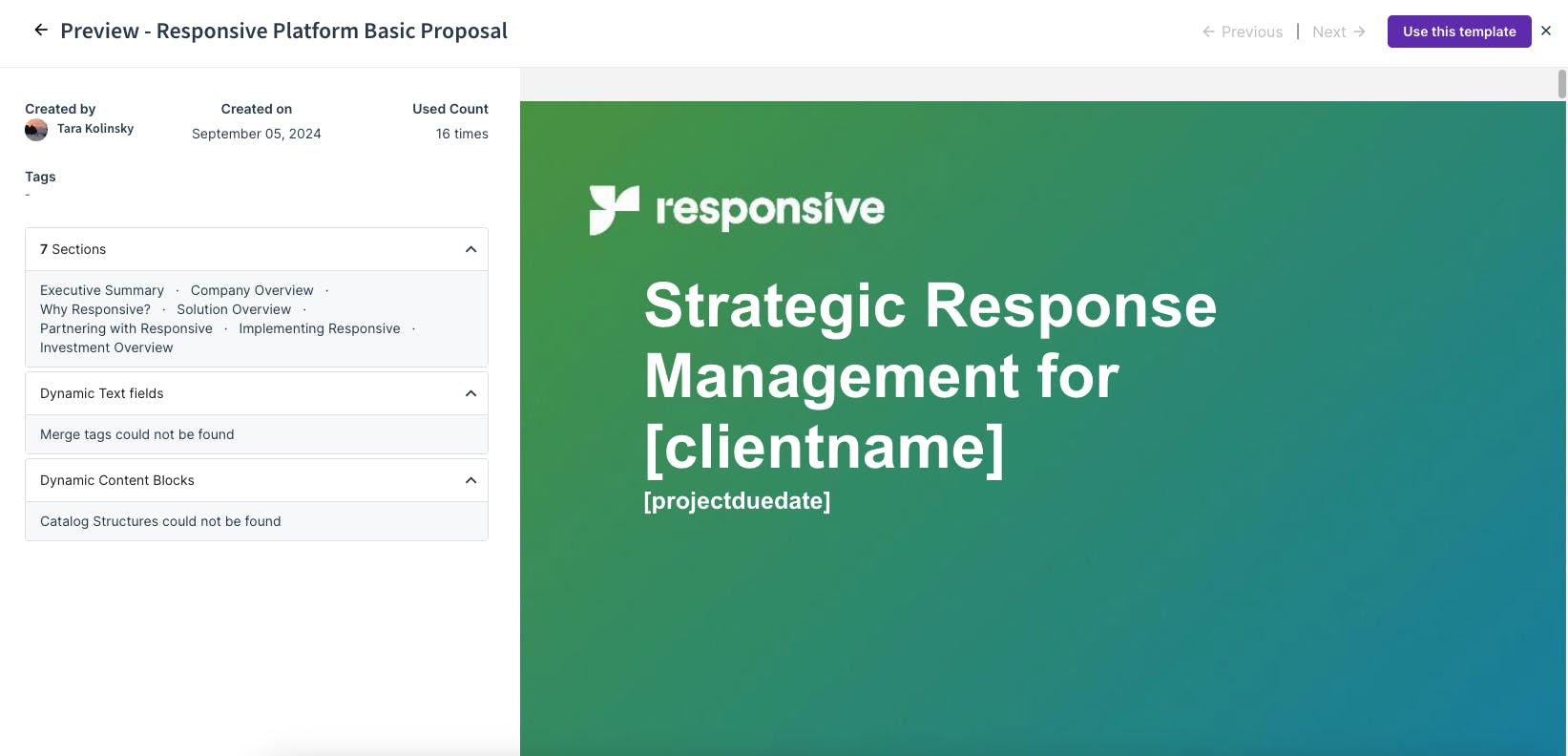
Content Library
A central repository for proposal content provides sales teams with quick access to all of your curated, approved, accurate, and up-to-date content and messaging.
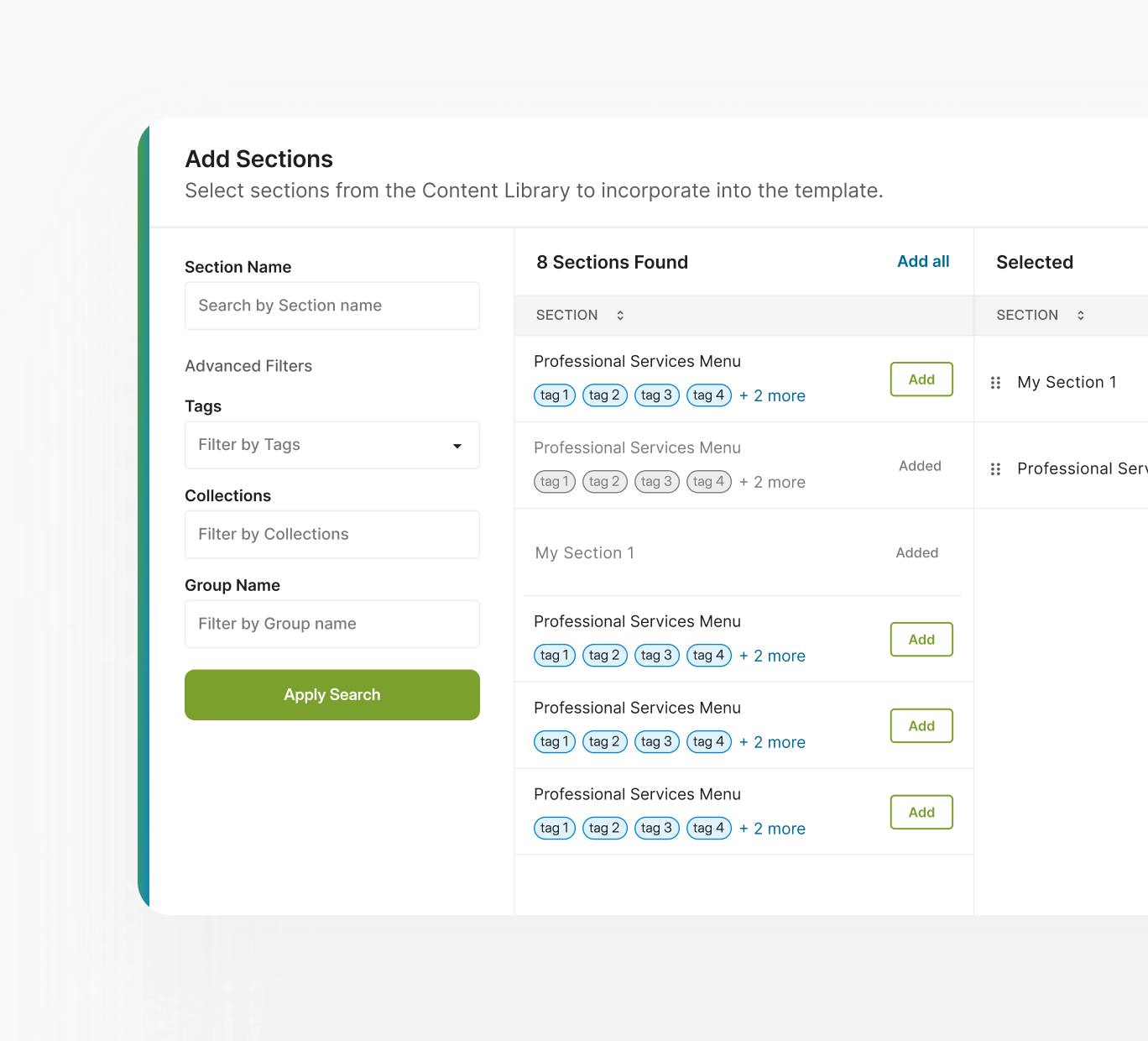
Personalization
Automation allows teams to insert dynamic content, such as client names, relevant case studies, and customized pricing, tailoring each proposal to the prospect(s). This helps to increase your odds of winning while demonstrating you know and understand their unique challenges.
Analytics
With real-time insights, sales teams can track proposal engagement and optimize follow-ups based on prospect behavior. Additionally, your sales team will better understand what opportunities they are more likely to win. Enable them to spend their time pursuing leads they can win, rather than wasting time on leads that are less certain.
The role of AI in proposal automation
AI plays a crucial role in automating time-consuming tasks while ensuring proposals remain high-quality and strategic. More recently, specialized AI agents have further empowered AI to help with proposal automation through features like:
RFP analysis
AI can instantly shred RFXs, DDQs, VSQs, and long-form questionnaires, identifying key requirements and automatically mapping them to existing content. Additionally, you’ll be able to make go/no-go decisions in a snap, removing guesswork and accelerating the pursuit lifecycle.
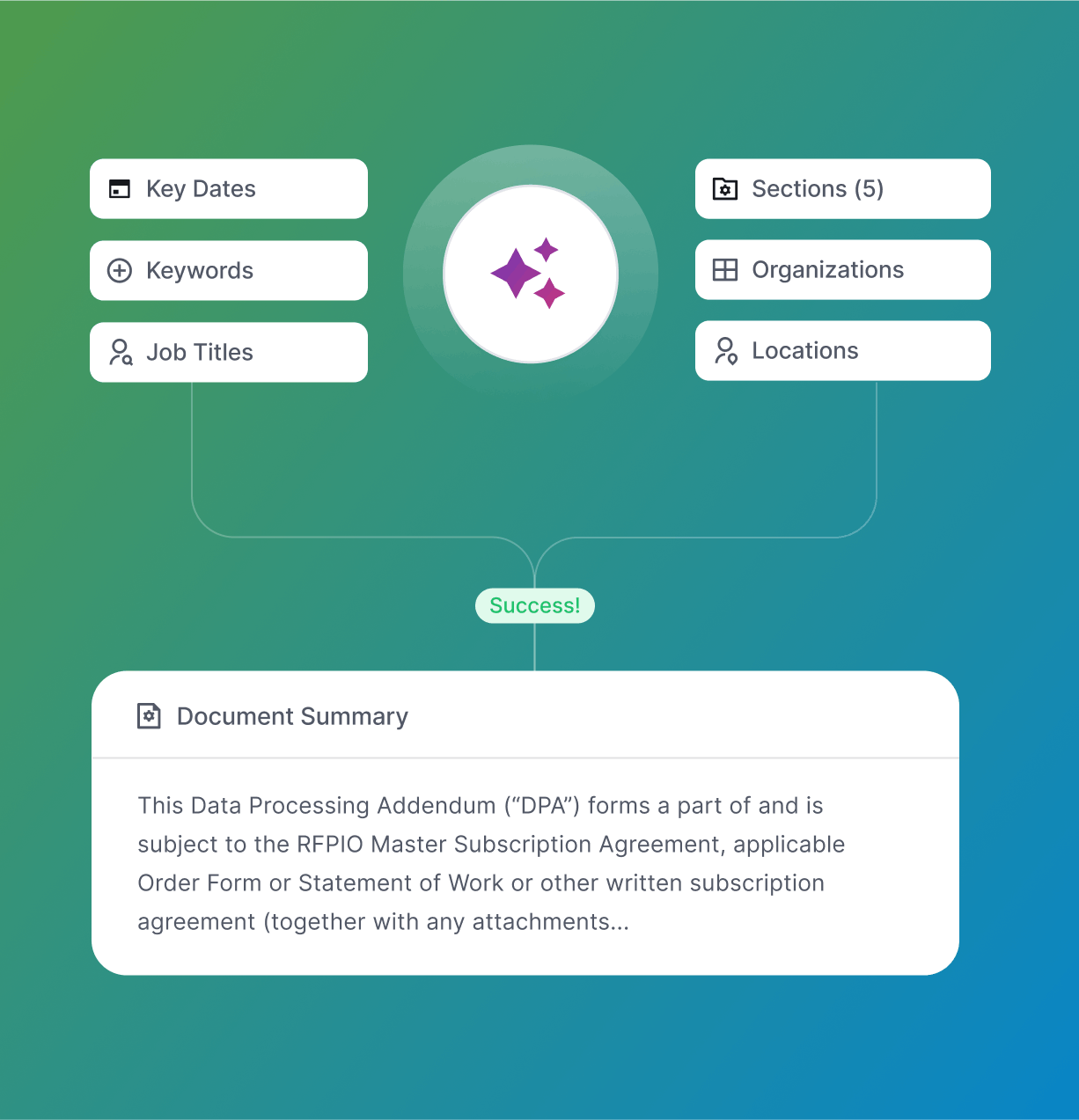
Drafting
Automatically generate an accurate, tailored response with a Responsive AI agent that draws from trusted content and prior successful responses. In particular, your sales team can unburden your busy InfoSec teams by completing drafts of security questionnaire responses in seconds.
Customization
AI can refine responses based on tone and context, ensuring that proposals align with client expectations. You can also put formatting on autopilot with an import AI agent that will import and organize complex assessments, questionnaires, and other documents. The agent will then automatically capture and identify tables, dropdowns, subsections, and more.
Start generating effective proposals at scale
Automated sales proposals are a game-changer. By integrating AI-driven proposal automation and powerful new specialized AI agents, sales teams can respond faster, win more deals, and operate more strategically.
Looking to learn a little more about proposal management and how to choose the right solution for your team? Explore How to choose a proposal management solution to find the best fit that matches your team’s unique challenges and requirements.
